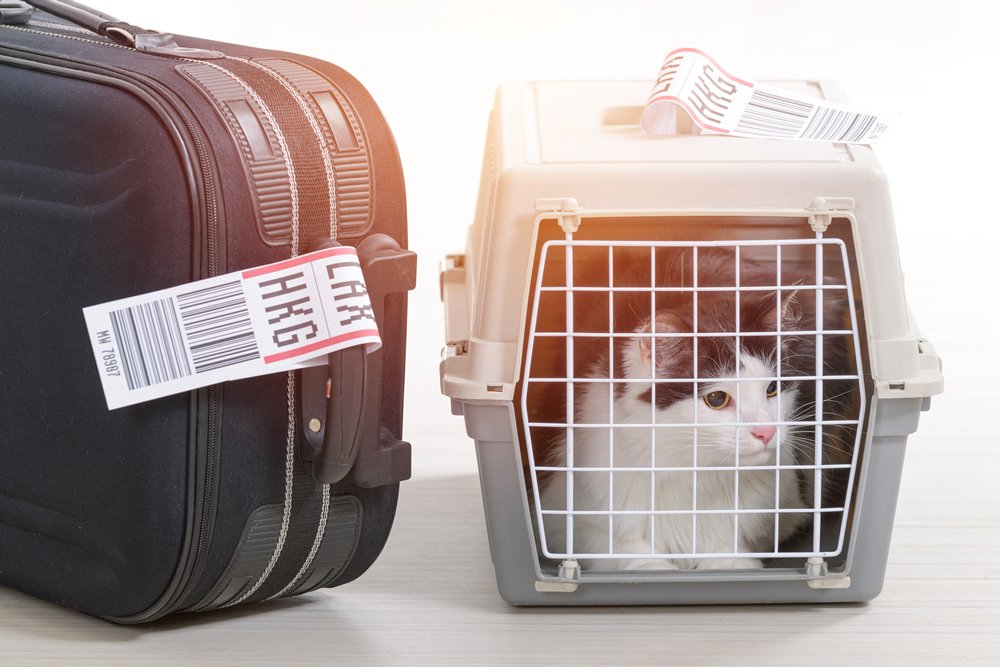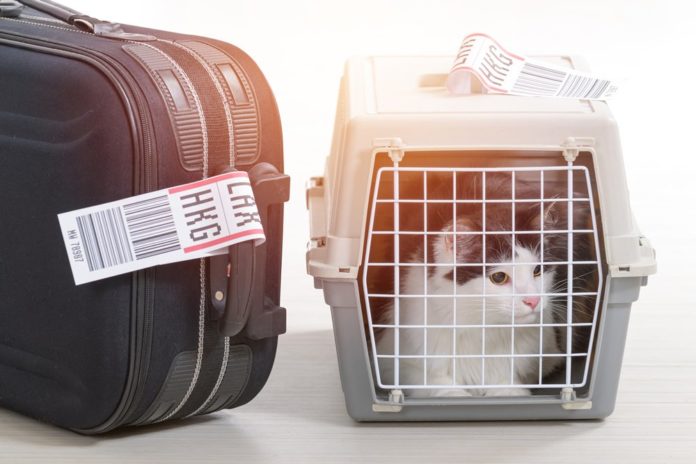
1. Restraint and identification. There are many safe crates that will both confine and help protect your cat in case of a crash. Even if your cat doesn’t wear one at home, consider adding a collar with your name and phone number embedded or tags to identify your cat. Microchipping is even better.
2. Consider sedation or other means of calming if your cat is not a happy traveler. This may mean a prescription medication from your veterinarian, or simply using a pet pheromone or aromatherapy preparation designed for cats. Always discuss options with your veterinarian before trying.
3. Plan on packing food and water for your cat. Cats do best with their usual routine and normal diet. Add in an extra day or two of food, in case of delays.
4. Routine is important. Try to keep your cat’s normal schedule as much as possible. That means mealtimes at the usual time, with plenty of time to use the litter box. Remember that your cat isn’t going to understand any time-zone changes, so you may need to adjust for that.
5. Be realistic. Most cats prefer to stay at home with a pet sitter instead of gallivanting cross country. That said, there are adventure cats, and if that’s yours, be prepared to ensure your cat’s safety.




